Different types of lenses for DSLR
The prime benefit of DSLR is its ability to allow changing lenses based on different situation. But, there are so many options to use and a user should be very clear about the basic use of every type of lens, to create maximum impact in an image.
Every type of lens covers an angle of view (do not worry, if you do not know what it is, just keep reading) based on which it is categorized under different categories.
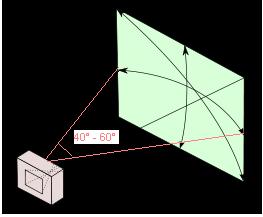 To understand the concept behind the angle of view, we need to have a reference point. Can you find a reference point yourself? Do you know any lens which you use every day? If not, think again, because, actual you do! Yes, your own eye, which is the most intelligent lens in the world. Keeping intelligence aside, let us find out how our eye becomes reference point to understand different types of lenses.
To understand the concept behind the angle of view, we need to have a reference point. Can you find a reference point yourself? Do you know any lens which you use every day? If not, think again, because, actual you do! Yes, your own eye, which is the most intelligent lens in the world. Keeping intelligence aside, let us find out how our eye becomes reference point to understand different types of lenses.
Keeping eyes stable and looking straight, our eyes can approximately cover 40° - 60° of view in horizontal direction. Here "view" means, anything which our mind (the processor) can clearly comprehend without eye movement (you can look some part sideways also, but you cannot "clearly" focus or comprehend. Try it). When we place a lens with approximately 50mm of focal length on a full frame camera (35mm equivalent), we get the same angle of view (Refer to the image below for the angle of view of eye in horizontal direction). Please read this paragraph again and understand it well, as it is going to become basis of our understanding lenses.
Before going ahead, understand that whatever we will discuss in this article is only with respect to full frame cameras (such as Canon 5D Mark II, III, 1Dx or Nikon D700, D800, D3S, D4). I will further explain at the end, how to apply the same concept to your camera (if it is not a full frame camera).
Types of Lenses for SLR and DSLR cameras
Now, based on different angle of views (or different focal lengths), we have different lenses. Unfortunately, it is not practically possible to create one lens with complete range of focal length. So, we have different types of lenses and they have different applications.
We will move from lower focal length (broader angle of view) to the higher focal length (smaller angle of view). We will also discuss about their applications.
(i) Fish Eye: A fish eye lens can cover 180° of angle of view. That means it can cover anything between your arms, when you keep your both arms up in horizontal direction parallel to your body. This is a special purpose (or special affect) lens and gives a distorted picture. Image from this lens is in oval shape. Fisheye lens can be of 8 mm or 15 mm. Both give 180° of angle of view. Basically, the construction of lens is different. Unlike other lenses (which are flat on the glass side), it has got a convex curvature protruding outside.
(Image below is taken at 10.5mm mm using 10.5mm Fish Eye Prime Lens.)

(ii) Wide Angle (Prime): A prime lens is one, which has got a fixed focal length, i.e., you cannot change it. Now, once you have understood the concept of angle of view and 50mm (normal view), anything, which is below 50mm is wide angle (i.e. it can cover broader area). So, lenses with fixed focal lengths, say 24 mm, 35mm, 40mm are all wide angle prime lenses. Now the question is do we have wide angle lenses with all the focal length below 50mm? The answer is "No". Camera companies make fixed lenses based on user feedback and need. So a selected number of focal lengths are only available under wide angle prime lenses (Some focal lengths are already mentioned in this paragraph).
Since the focal length is fixed, the image quality of prime lens is very high. They also have larger apertures (read about apertures in separate article). However, this image quality is at the cost of your flexibility to change focal lengths. These lenses are used for landscape, nature, people and architecture photography.
(Image below is taken at 14 mm using 14mm Wideangle prime lens)
.jpg)
- Digital camera lens buying guide : Different kinds of DSLR lenses
3. Wide Angle Zoom: A zoom lens is one where we can change the focal length over a range. A wide angle zoom lens will have focal length range below 50 mm. It starts typically between 8mm-18mm and end anywhere around 35mm. The typical examples of this category are 10mm - 22mm, 16mm – 35mm, 14mm – 24mm, etc. These are primarily used for landscape, nature, people and architecture photography, where we needed wider view. The wide angle view gives slight distortion in the image, especially on the sides. The objects tend to bend inwards, for e.g., a tower would look slightly tilted towards center, but the benefit is that at least you are able to cover the complete tower in one image!.
(Image below is taken at 24 mm using 10-24mm wide agnle lens.)
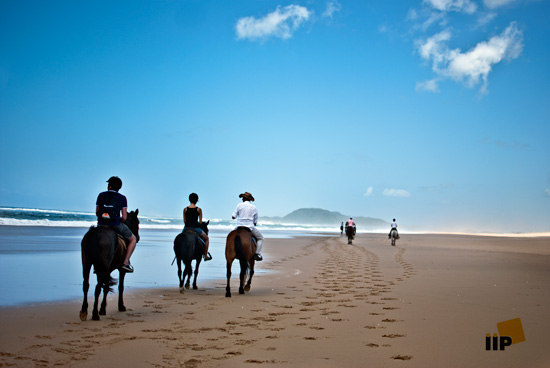 4. Normal:
4. Normal: Normal means 50mm (by now, you must be very clear what is 50mm focal length). We even call lenses in the range of 40mm to 60mm as normal lens as they provide approximately the human eye perspective. These are fixed focal length lens and with widest aperture (to the tune on F/1.2). This makes this lens a best option for low light photography. These can be very useful at home, where we have lower light levels. They also provide very good bokeh affect and shallow depth of field due to bigger apertures. These features make them one of the best portrait and general purpose lens. Every kit should have this lens.
Both the images below are taken at 50 mm using 50mm F/1.8 normal lens
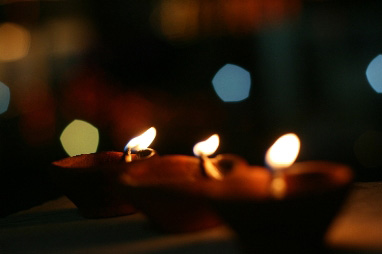
 5. Standard Zoom:
5. Standard Zoom: These lenses provide focal lengths from wider (below 50mm) to longer (above 50mm). The typical examples are 18 mm – 55mm, 24mm-105mm, 18mm-135mm, 18mm – 105mm, 18mm - 300mm etc. These are the best general purpose lens and are available as kit lens from different Camera vendors. They can be used for landscape photography, nature photography, portrait photography, fashion photography, infact almost for every type of photography except wildlife and sports. They are generally available in affordable range; however, some lenses with high quality glass can be with higher prices tags.
(Image below is taken at 18 mm using 18mm-55mm kit lens.)
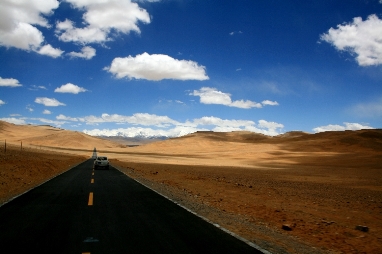
- Different Types of Photography Lenses Tutorial
6. Telephoto (Prime): Telephoto is anything above 50mm. It gives a narrower angle of view than 50mm and shows distant objects closer. Since we are talking of prime lens, these are also fixed focal length lens. The typical examples are 135mm, 200mm, 300mm, 400mm, 500mm, etc. Focal lengths around 70mm – 120mm are used for portrait photography, between 100mm to 200mm are useful for street photography and above 200mm are used for wildlife, bird and sports photography. The prime lenses with higher focal length tend to be very costly, to the tune of Rs 200,000 – Rs 600,000. These lenses provide big apertures at higher focal lengths, excellent details, helps in very fast autofocus, excellent image stabilization and have very good quality glass. These features are mandatory for wildlife and sports photography.
(Image below is taken at 200 mm using 200mm Telephoto Prime Lens.)
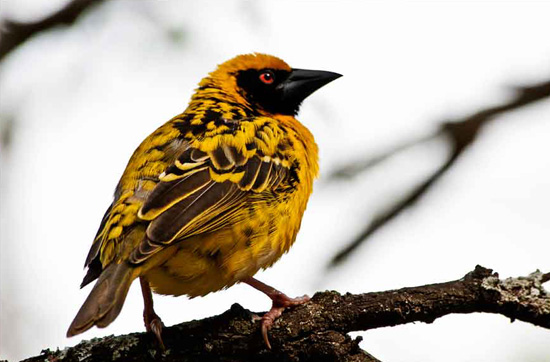 7. Telephoto zoom:
7. Telephoto zoom: These lenses have range of focal lengths ending above 200mm. It generally starts above 50mm (but sometimes can be below 50mm). The typical examples are 70mm-200mm, 50mm – 500mm, 150mm – 500mm, 100mm – 400mm, 80mm – 400mm, 55mm – 250mm, etc. These are some of the most versatile lenses. You can shoot portrait, do street photography, wedding photography, wildlife, sports, bird, in fact anything except broad view landscape and nature photography.
( Image below is taken at 250mm using 55mm – 250mm telephoto zoom lens.)
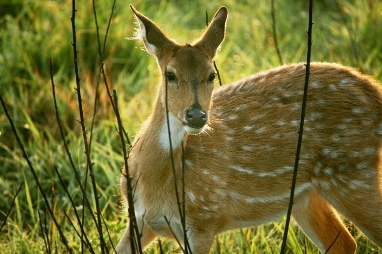
The figure below gives a relation between angle of view and the focal length. We can find that as the focal length increases, angle of view decreases. The higher the focal length, the larger the magnification, i.e. at 400 mm, you can easily shoot distant objects, such as wildlife.
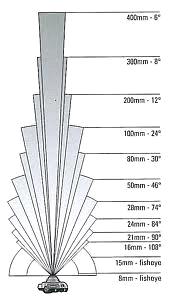
- Learn About Different Types of DSLR Lenses
8. Macro Lens: These lens helps in taking sharp and life size images of smaller subjects such as small insects, flower petals, water droplets, etc. These have similar principle as we have in microscopes. They allow close focusing distance; magnify smaller subjects, gives 1:1 (life size magnification) and sharpness across the image. Some general purpose lenses like 50mm, 24mm - 105mm also have Marco modes. They allow some level of macro photography. However, we have dedicated Marco lens also such as 100mm and 180mm. Apart from Marco images, they also provide pleasing portraits.
( Image below is taken at 105 mm using macro mode of 24mm-105mm lens. The dedicated Macro lens provide even better magnification of smaller objects. )
 9.Tilt-Shift:
9.Tilt-Shift: "Tilt–shift" encompasses two different types of movements: rotation of the lens plane relative to the image plane, called tilt, and movement of the lens parallel to the image plane, called shift. Tilt is used to control the orientation of the plane of focus (PoF), and hence the part of an image that appears sharp; it makes use of the Scheimpflug principle. Shift is used to adjust the position of the subject in the image area without moving the camera back; this is often helpful in avoiding the convergence of parallel lines, as when photographing tall buildings. Therefore, these are primarily used in photographing architecture. Do not worry, if could not understand this lens properly. There is very rare chance that you are going to use it.
How to check focal length in non-full frame bodies
The size of sensor of full frame camera is 36mm X 24mm (35 mm equivalent). Every camera's technical specification provides the size of its sensor or the crop factor. You can find this crop factor by dividing the 36mm by longer side of your sensor dimension. For e.g., if you have a Canon APS-C body, then you will have sensor of size 22.3mm X 14.9mm. Now, divide 36mm by 22.3mm, which gives you 1.6. This is your crop factor. Smaller cameras, point and shoot cameras and four third systems have even smaller sensor, so bigger crop factor (refer to the image below).
To calculate the actual focal length of your lens on your camera, just multiply the focal length with the crop factor. So, in our example, 50mm focal length on Canon APS-C is equivalent to 50 X 1.6 = 80mm in full frame format. Now, you can apply all the principles read in this article.
 To gain more technical and practical knowledge, join Indian Institute of Photography online or classroom courses. The course material and support from highly experience faculty will provide you much higher dimensions of photography skills.
To gain more technical and practical knowledge, join Indian Institute of Photography online or classroom courses. The course material and support from highly experience faculty will provide you much higher dimensions of photography skills.
 To understand the concept behind the angle of view, we need to have a reference point. Can you find a reference point yourself? Do you know any lens which you use every day? If not, think again, because, actual you do! Yes, your own eye, which is the most intelligent lens in the world. Keeping intelligence aside, let us find out how our eye becomes reference point to understand different types of lenses.
To understand the concept behind the angle of view, we need to have a reference point. Can you find a reference point yourself? Do you know any lens which you use every day? If not, think again, because, actual you do! Yes, your own eye, which is the most intelligent lens in the world. Keeping intelligence aside, let us find out how our eye becomes reference point to understand different types of lenses.
.jpg)